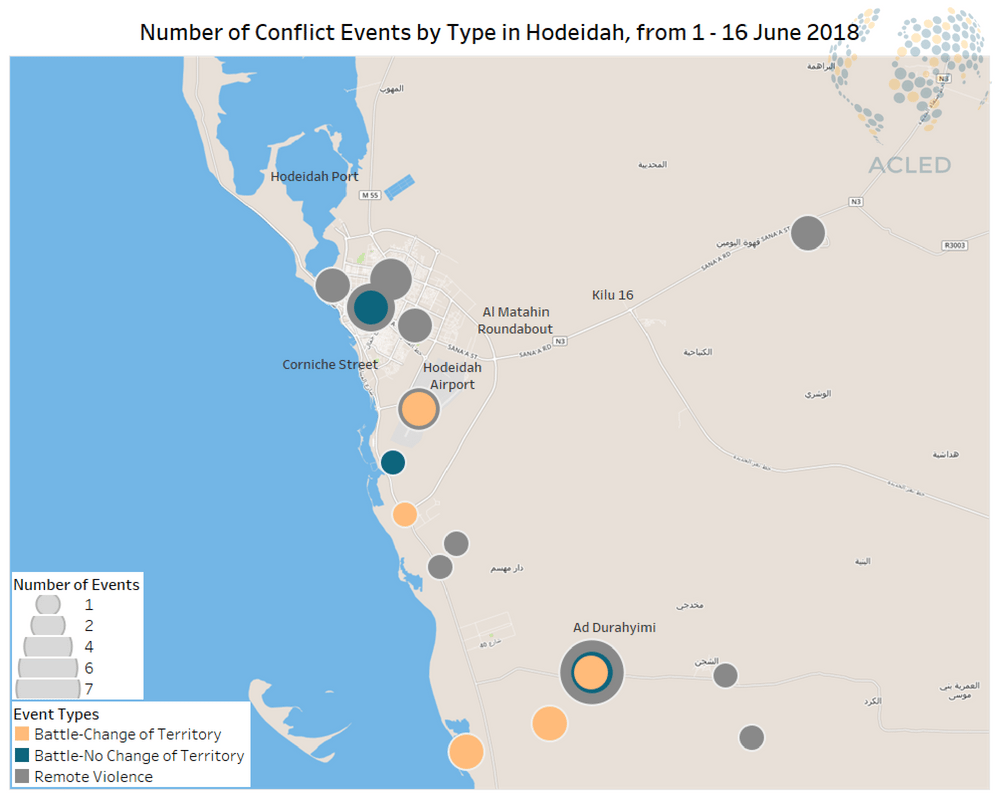After weeks of speculations and a three-day deadline set by the UAE for the Houthis to leave the port city, Yemeni forces backed by the Saudi-led coalition launched the offensive for Hodeidah on Wednesday, June 13. Dubbed Operation Golden Victory, it is the latest name given to the attempt to recapture the Red Sea coast from Houthi fighters, previously cast as Operation Golden Spear, and more recently Operation Red Thunder. Seizing the port of Hodeidah has been an official target of the Saudi-led coalition for at least a year, as the coalition believes that it will cut off a sizeable part of the Houthis’ income as well as their weapons supply.
The takeover of Hodeidah, however, is all but straightforward, as this battle is the first time that coalition-backed forces have attempted to retake such a large city from the Houthis. When they ousted Houthi and allied fighters from Aden and Taiz in 2015, anti-Houthi forces were defending urban centres that had never been in full control of the Houthis and their allies. By contrast, the Houthis have been in control of Hodeidah since its takeover in October 2014. This has prompted media to report about “the largest battle of the Yemen war” – as Hodeidah city houses 400,000 inhabitants and its direct surroundings another 200,000 (Reuters, 13 June 2018).
The coalition leadership – and in particular the UAE – believe that they can overcome this tactical challenge by outnumbering Houthi ground forces. Reports estimate that the number of coalition-backed troops varies between 21,000 and 26,500, while Houthi fighters are estimated between 2,000 and 5,000 (Mello & Knights, 15 May 2018; Reuters, 13 June 2018; Knights, 14 June 2018). Although most recent offensives on the Red Sea coast were led by the forces of Tareq Saleh (ACLED, 10 May 2018), Golden Victory is spearheaded by the 15,000-strong Giants Brigade, principally composed of Salafi and pro-independence southerners (Twitter, 12 June 2018; Twitter, 17 June 2018).
The international community and several NGOs have expressed serious concerns about the humanitarian consequences of the campaign and, more specifically, of an urban battle in Hodeidah (among others, see Human Rights Watch, 15 June 2018 and the All-Party Parliamentary Group for Yemen, 22 May 2018). The Saudi-led coalition responded to these claims by stating that the goal of the operation is to overtake the airport and to reach its port by circling around the eastern part of the city, while cutting off the Hodeidah-Sana’a supply route (see figure below). Coalition spokesman Turki al-Malki explicitly pledged to “not fight a street war with the Houthis in Hodeidah for the safety of civilians” (The New York Times, 13 June 2018).

However, as soon as they closed in on the airport area after nearly a week of fierce fighting, coalition-backed Yemeni forces reported that, in addition to moving eastwards in the direction of Al Matahin roundabout and the Kilu 16 area to cut off the Hodeidah-Sana’a supply route, they would also be moving towards Corniche Street in western Hodeidah (Twitter, 19 June 2018) (see figure above). If they attempt to reach the port by cutting through the city — and therefore engaging in urban warfare — it will be difficult to avoid civilian casualties, which have already been reported as a result of both Houthi shelling and Saudi-led coalition airstrikes on the city (Twitter, 19 June 2018; Twitter, 19 June 2018). Civilians continue to also be in danger from the large number of landmines that Houthis have laid around the city to slow the progress of anti-Houthi forces, while reportedly stockpiling food and fuel in the city in the event of an offensive since late 2016 (International Crisis Group, 11 June 2018) (for more on the Houthi use of landmines, see this recent piece from ACLED).
Although the UAE’s State Minister for Foreign Affairs Anwar Gargash has reiterated the willingness of the coalition “to protect the flow of humanitarian aid and to protect civilians” (Al Yaman al Araby, 19 June 2018), protracted urban fighting may significantly increase the human costs in this battle for Hodeidah.
Find an explanation of ACLED’s methodology for monitoring the conflict in Yemen here.





